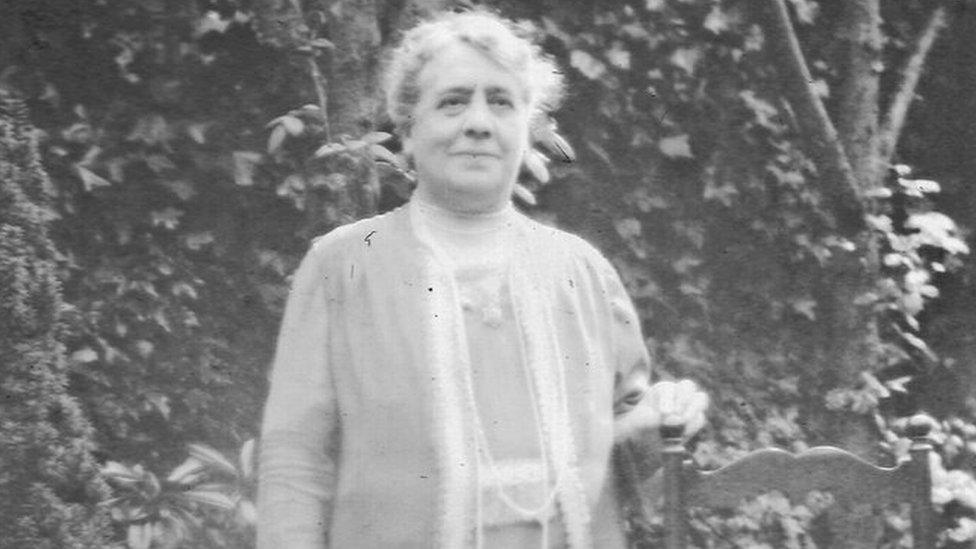Bedford Shire Hall receives Grade II* listing upgrade
- Published
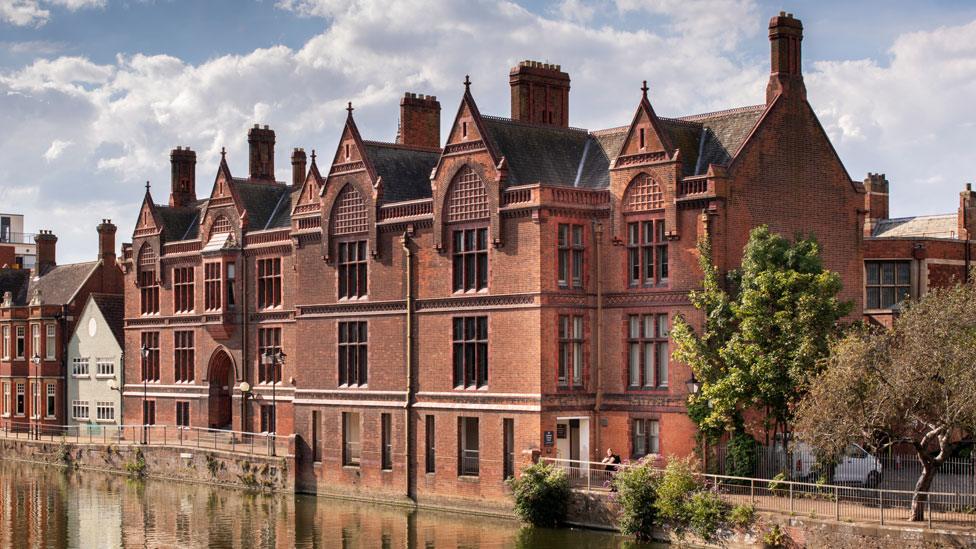
The Victorian Shire Hall was built in two phases, with the first part completed on the river front between 1878 and 1881
A late Victorian civic building with "remarkably intact" interiors has had its listing upgraded to Grade II*.
Bedford Shire Hall was designed by Alfred Waterhouse, external, the architect behind London's Natural History Museum and Manchester Town Hall.
He replaced the Georgian Shire Hall with a three-storey building, with a baronial hall and offices, in 1883.
Bedford Mayor Tom Wootton said: "It's great to see this wonderful building be recognised."
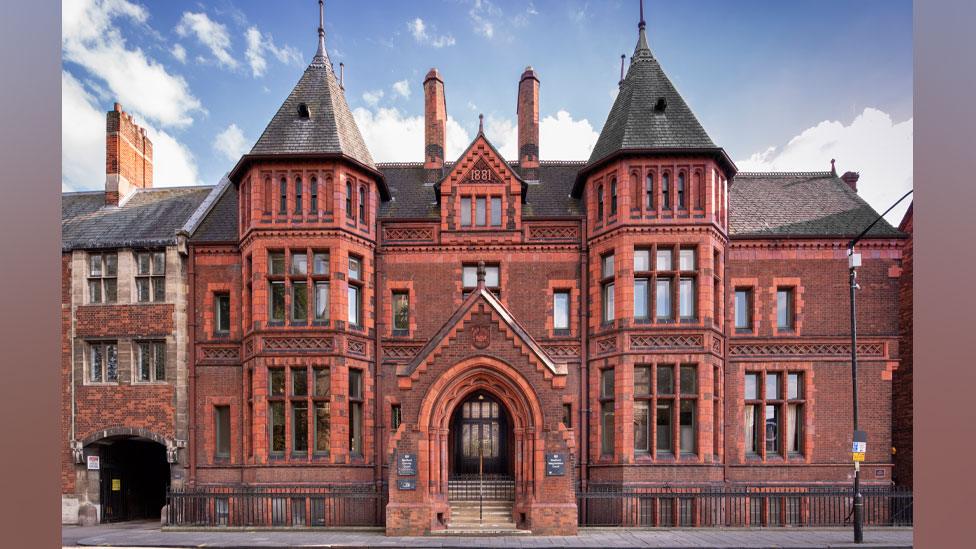
Phase two was opened in 1883 with this three-storey building, housing justices' meeting rooms and borough council accommodation
The hall retains its hammer-beam roof, elegant stained glass windows, wood panelling and ornate floor tiles.
Historic England listing adviser Eilise McGuane said: "Bedford Shire Hall is a magnificent civic building and we are delighted to recognise its high level of special architectural and historic interest by upgrading this listed building to Grade II*."
Waterhouse was asked to design the new building in March 1878, after it was decided an earlier 1752 sessions house was not large enough.
He first added new assize courts at the back of the building, including a riverfront entrance.
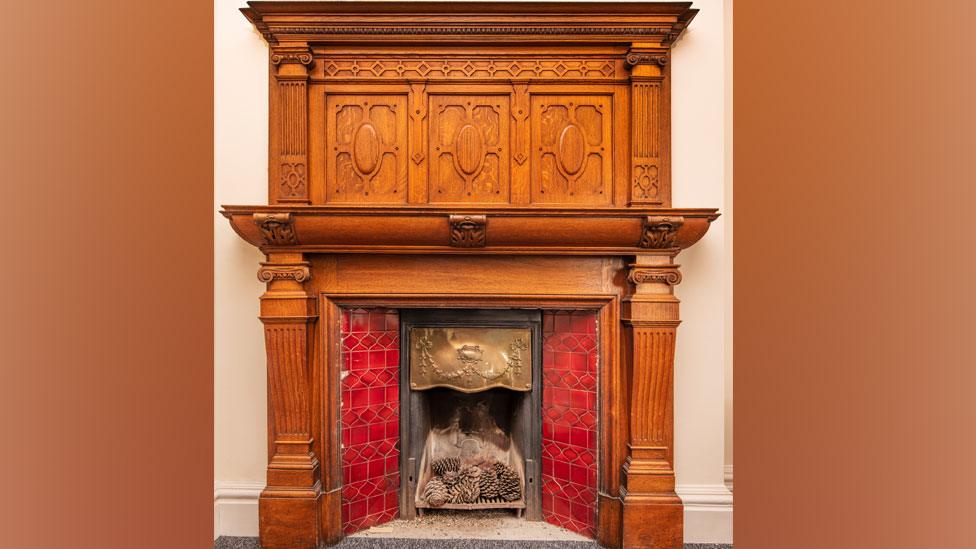
Historic England says "the original Victorian interiors are remarkably intact", including features such as this elaborately decorated fireplace
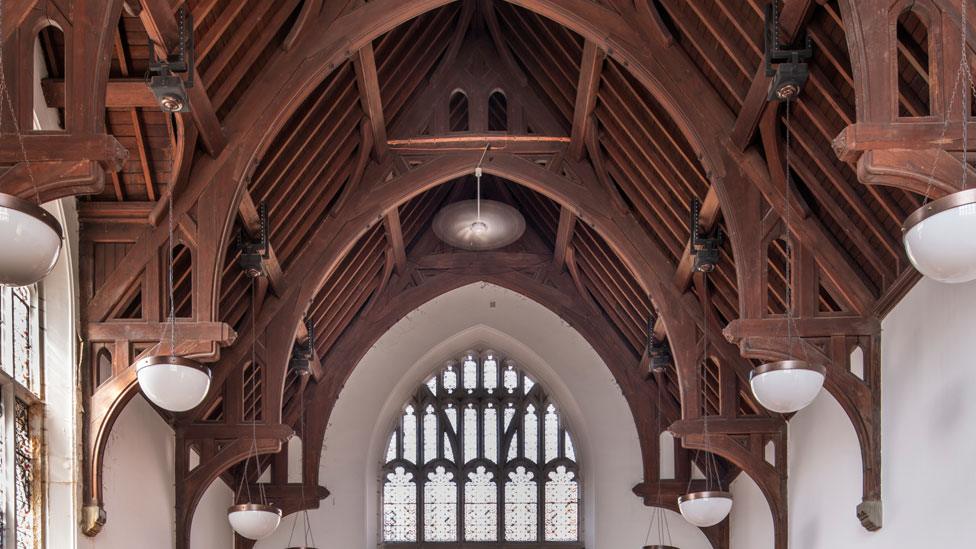
There is also an impressive hammer-beam roof spanning the large entrance hall of the building, which was first listed in 1971
Next, he replaced the Georgian Shire Hall on St Paul's Square, adding a baronial hall, retiring rooms for judges, offices for the borough council and a library.
The west courtroom retains its original furniture to the dock, prosecution, defence, clerk, magistrates, witness and probation sections.
Waterhouse also designed furniture and fittings, including clock cases in each court, coal-scuttles and even the lamp posts on the pavement outside.
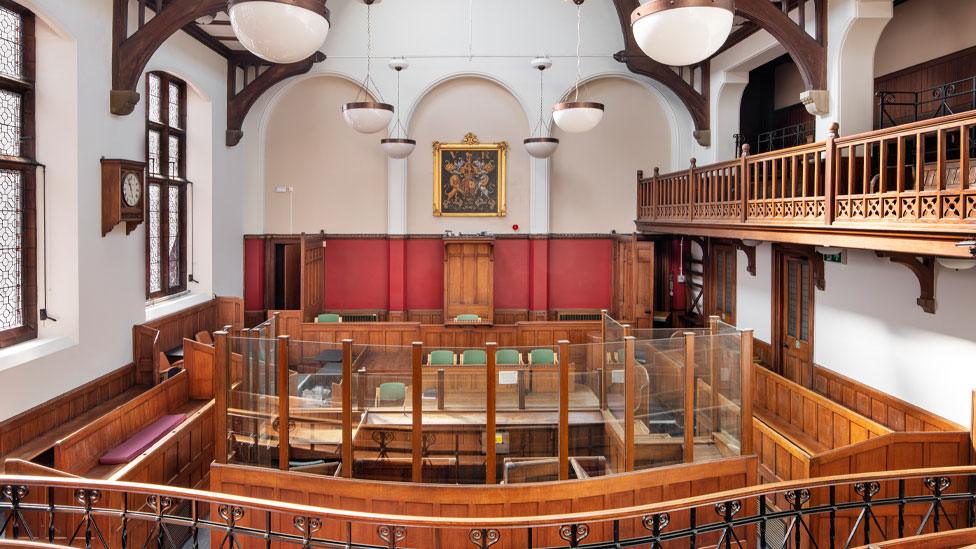
The Victorian courtrooms contain much of their original furniture
Additional extensions were added from 1888, when it became the headquarters of the new county council, and for legal officials.
The building was occupied by the assize courts until 1972. It is currently home to the crown and magistrates' courts.
Ms McGuane said she would "love for people to add their own photos, memories and information" to Historic England's Missing Pieces Project, external "to help everyone appreciate this important building".

Follow East of England news on Facebook, external, Instagram, external and Twitter, external. Got a story? Email eastofenglandnews@bbc.co.uk, external or WhatsApp us on 0800 169 1830
Related topics
- Published6 July 2023
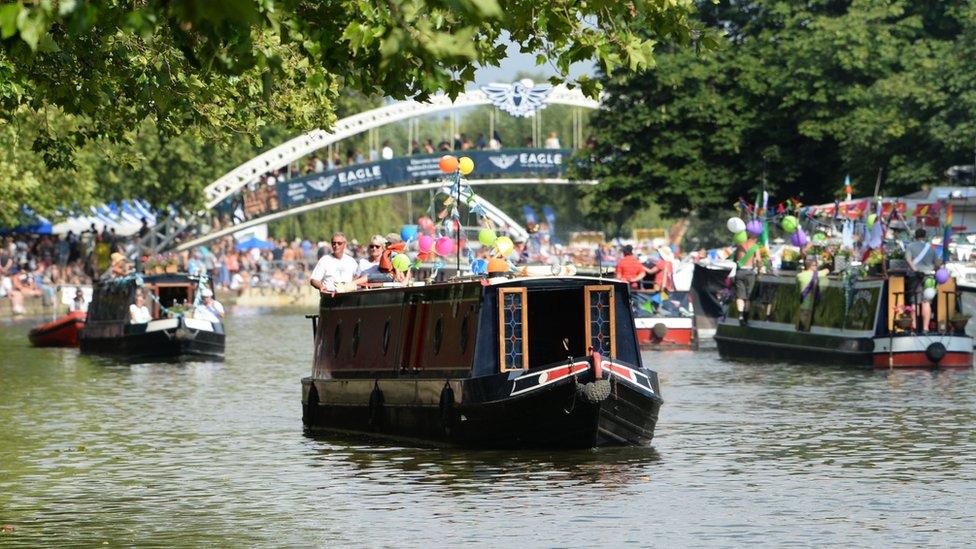
- Published23 June 2022

- Published6 November 2022

- Published1 November 2022
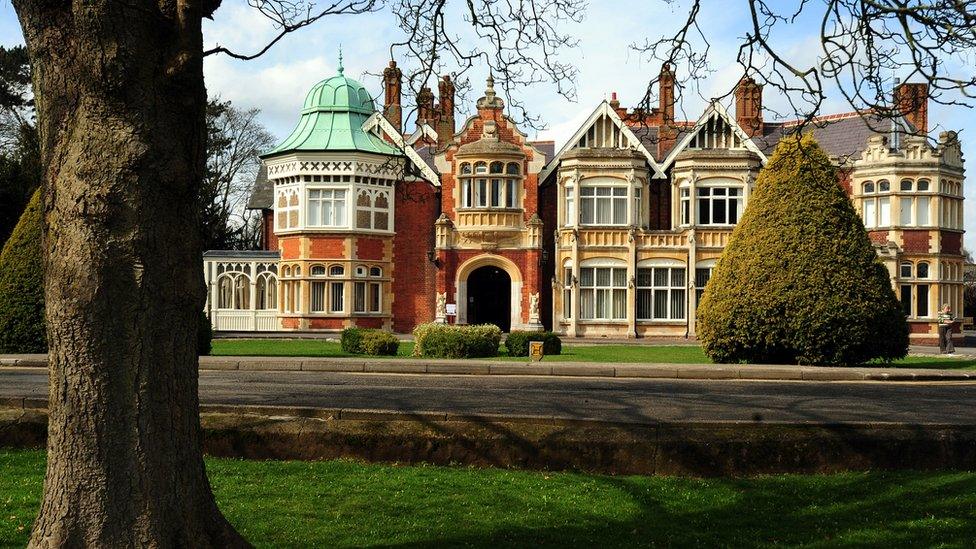
- Published17 November 2019
